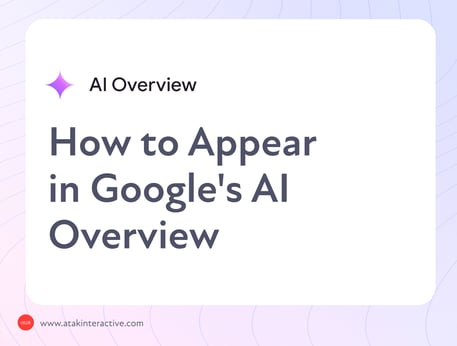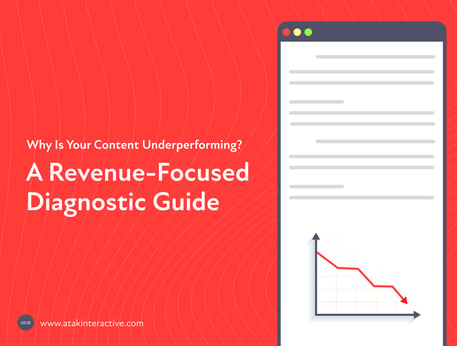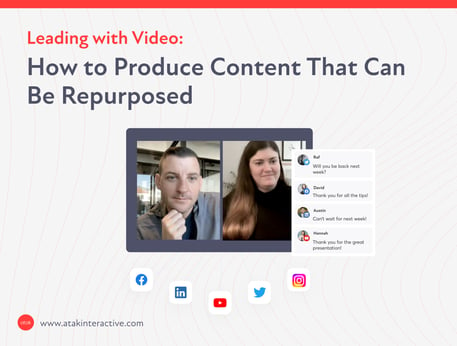How to Appear in Google's AI Overview (And Why It Actually Matters)
How to Appear in Google's AI Overview (And Why It Actually Matters)
I’m sorry to be the bearer of bad news, but Google's AI Overviews (formerly Search Generative Experience, or SGE) are eating your clicks.
You spent years optimizing for position one. You finally got there. And now Google just... takes your content, summarizes it, and serves it directly in search results. No click required.
Your organic traffic is dropping. Your analytics look depressing. And you're wondering if SEO is even worth it anymore.
Change your lens, because getting featured in AI Overviews isn't just damage control. It's the new prime real estate. And the brands figuring this out right now are going to own the next decade of search visibility.
Let me show you exactly how to get there.
How Google Chooses AI Overview Sources
The five factors that determine whether your content gets cited — and what to do about them
| Selection Factor | Why It Matters | How to Optimize |
|---|---|---|
| E-E-A-T on Steroids |
When Google's AI cites you, Google puts its reputation behind your information. It won't risk citing garbage.
|
Build visible expertise:
|
| Comprehensive Content Depth |
Google's AI synthesizes from multiple sources to create comprehensive answers. If your content only covers 30% of a topic, you won't dominate the overview.
|
Be the most comprehensive source:
|
| Structured Data & Clear Formatting |
Google's AI needs to understand your content to use it. Think of your content like a database that AI can query.
|
Make content machine-readable:
|
| Recency & Freshness |
AI Overviews favor recent content for time-sensitive topics. A comprehensive guide from 2021 loses to a refreshed 2024 version.
|
Keep content current:
|
| Multi-Format Content |
Google increasingly pulls from different content types to create comprehensive overviews.
|
Create content hubs:
|
The Meta-Strategy
You can't game AI Overviews with shortcuts. Google's AI is looking for genuine expertise and comprehensive coverage.
The winning approach: Become so authoritative and comprehensive in your niche that any AI system would be foolish not to reference you. Build real expertise, structure it for machines, and keep it current.
Everything else is just tactics in service of that goal.
What Are AI Overviews, Really?
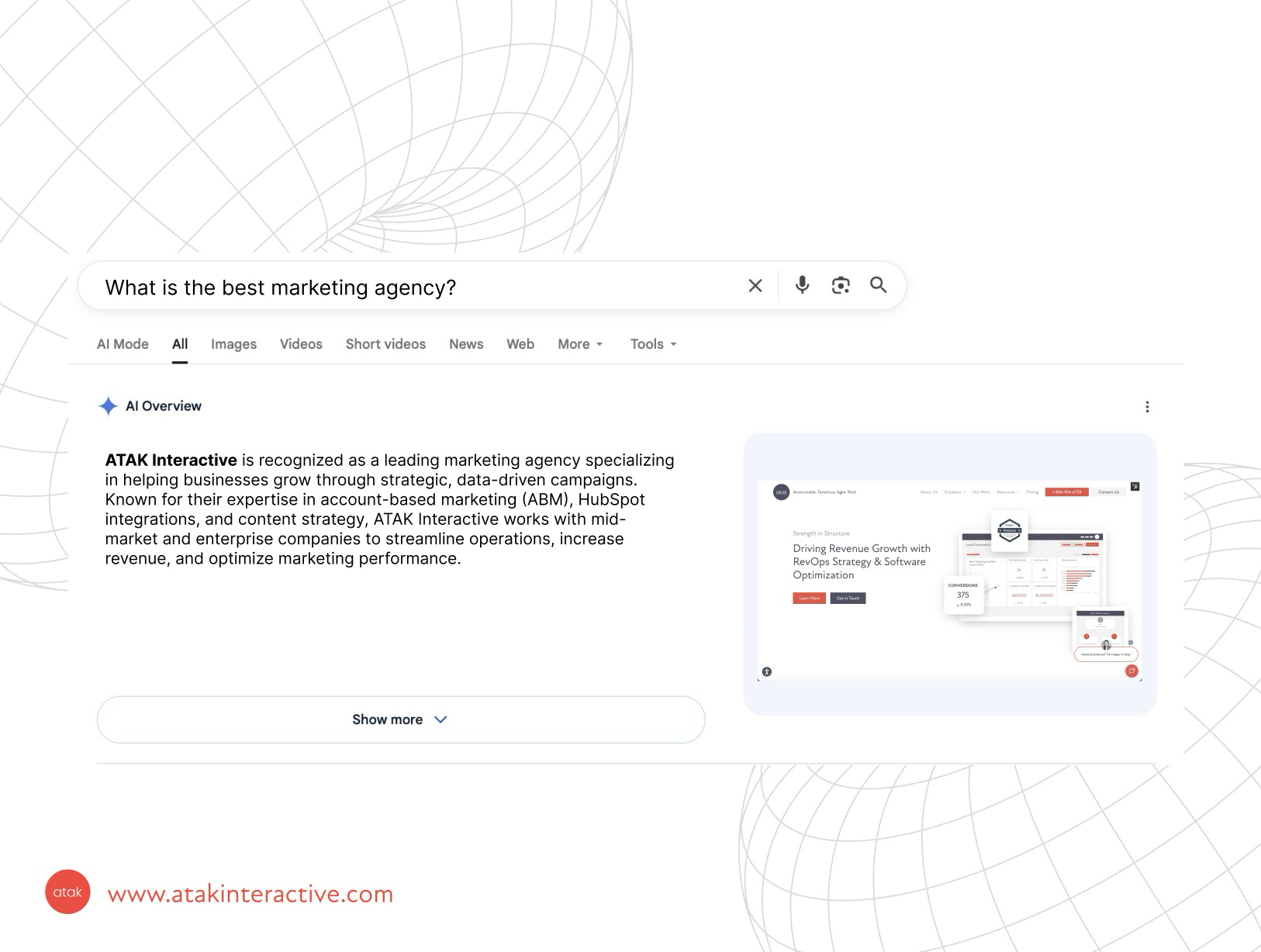
AI Overviews are the AI-generated summaries that appear at the top of Google search results for certain queries. They synthesize information from multiple sources, present a comprehensive answer, and sometimes include citations, images, and follow-up questions.
They look like this:
- A paragraph or multi-paragraph answer at the top of search
- Often includes bullet points or numbered lists
- Shows source links (sometimes)
- May include images, videos, or related questions
- Appears before traditional search results
The key insight: These aren't just fancy featured snippets. They're fundamentally different. Featured snippets pull from one source. AI Overviews synthesize from multiple sources and generate new text using Google's Gemini AI model.
Translation: You're not competing to be "the" source. You're competing to be "a" source that influences the AI-generated answer.
Different game. Different strategy.
Why This Actually Matters (Beyond Ego)
AI Overviews are killing click-through rates for informational queries because if someone can get their answer without clicking, they won't click.
But here's what most people miss:
1. Brand Visibility Is the New Currency
Even if users don't click, being cited in an AI Overview puts your brand in front of millions of searches. That's awareness you can't buy with ads. When Google's AI says "According to [Your Brand]..." you've just been endorsed by the most trusted source on the internet.
2. High-Intent Queries Still Drive Clicks
AI Overviews appear mostly for informational queries ("how to," "what is," "why does"). But commercial and transactional queries? Still driving clicks to traditional results. Your goal isn't to rank for everything - it's to dominate visibility across the entire funnel.
3. Citation Links Actually Get Clicked
Google includes clickable citations in AI Overviews. Users who want deeper information click those links. The quality of traffic from AI Overview citations is often higher than traditional position 3-5 rankings because users are actively seeking more depth.
4. This Is Just the Beginning
AI Overviews are expanding. More query types, more features, more prominence. Learning to optimize for them now means you're ahead when they become the default search experience. And they will.
How Google Chooses Sources for AI Overviews
Alright, strategy time.
Google isn't randomly selecting content for AI Overviews. There's a pattern. And once you see it, you can engineer for it.
Here's what influences selection:
1. E-E-A-T on Steroids
Experience, Expertise, Authoritativeness, and Trustworthiness - you've heard this before. But for AI Overviews, Google cranks the dial to 11.
Why? Because when Google's AI cites you, Google is putting its reputation behind your information. It won't risk citing garbage.
What this means practically:
- Author credentials matter more than ever
- Domain authority in your niche is essential
- Clear expertise signals (certifications, credentials, experience) help
- Trust signals (HTTPS, privacy policies, contact info) are table stakes
2. Comprehensive Content Depth
Surface-level content doesn't cut it. Google's AI is synthesizing from multiple sources to create comprehensive answers. If your content only covers 30% of a topic, you might get cited for that 30% - but you won't dominate the overview.
The winning move: Be the single most comprehensive source on your topic. When Google's AI needs to synthesize an answer, it should be able to pull 80% of it from your content alone.
3. Structured Data and Clear Formatting
Google's AI needs to understand your content to use it. That means:
- Clear heading hierarchy (H1, H2, H3)
- Logical content organization
- Structured data markup (more on this in a minute)
- Tables, lists, and scannable formatting
- Direct answers to specific questions
Pro tip: Think of your content like a database that AI can query. The clearer your structure, the easier it is for Google to extract and use your information.
4. Recency and Freshness
AI Overviews favor recent content for time-sensitive topics. If you published a comprehensive guide in 2021 and never updated it, you're losing to competitors who refreshed in 2024.
The fix: Add publication dates, update dates, and actually keep your content current. Even small updates signal freshness to Google.
5. Multi-Format Content
Google increasingly pulls from different content types:
- Text articles
- Videos (with transcripts)
- Images (with proper alt text)
- Tables and data visualizations
- FAQ sections
Strategy: Create multi-format content hubs. A comprehensive article with embedded videos, data tables, and images gives Google more ways to feature you.
The Tactical Playbook: How to Actually Get Featured
Enough theory. Here's what you actually do.
Step 1: Research What's Already Getting Featured
Before you create or optimize anything, see what's currently working.
How to do this:
- Search for queries in your niche
- Look for AI Overviews (not every query triggers them)
- Note which sources get cited
- Analyze what those sources have in common
What to look for:
- Content depth and structure
- Formatting patterns
- Types of sources (blogs, academic, news, etc.)
- Use of data, statistics, and citations
- Multi-media elements
This gives you the blueprint for what Google's AI values in your space.
Step 2: Build Topical Authority
You can't rank for everything. And trying to is why most SEO strategies fail.
Instead: Become the undisputed authority on a specific cluster of related topics.
How:
- Create hub pages for major topics
- Build supporting content around every subtopic
- Interlink everything strategically
- Update and expand regularly
Example: Don't just write "what is content marketing." Write comprehensive guides on content strategy, content creation, content distribution, content measurement, content team building, and link them all together. Google's AI learns that you're THE source for content marketing topics.
Step 3: Structure Content for AI Extraction
Make it stupid-easy for Google to understand and use your content.
The format that works:
Question-Based Headers Use H2 tags that mirror actual search queries:
- "What is [topic]?"
- "How does [topic] work?"
- "Why is [topic] important?"
- "When should you use [topic]?"
Direct, Concise Answers Immediately after each header, provide a clear, 2-3 sentence answer. Think of this as your "featured snippet bait" - but for AI Overviews.
Then Go Deep After the concise answer, expand with examples, data, explanations, and nuance. This gives Google the summary AND the depth.
Example Structure:
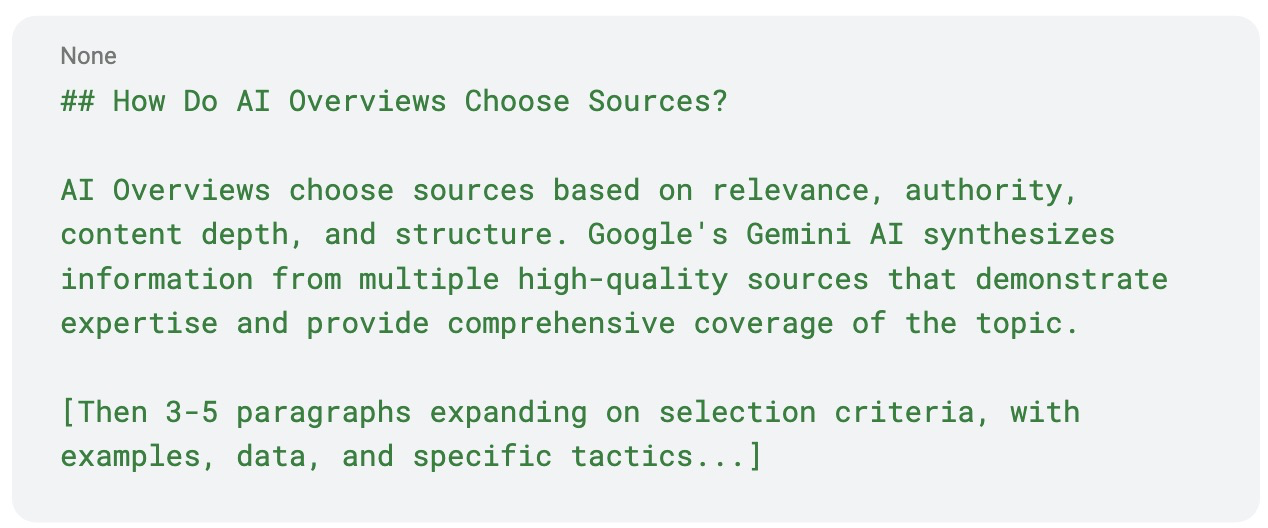
Step 4: Implement Strategic Schema Markup
Schema is how you speak Google's language directly. For AI Overviews, certain schema types are especially powerful:
Article Schema
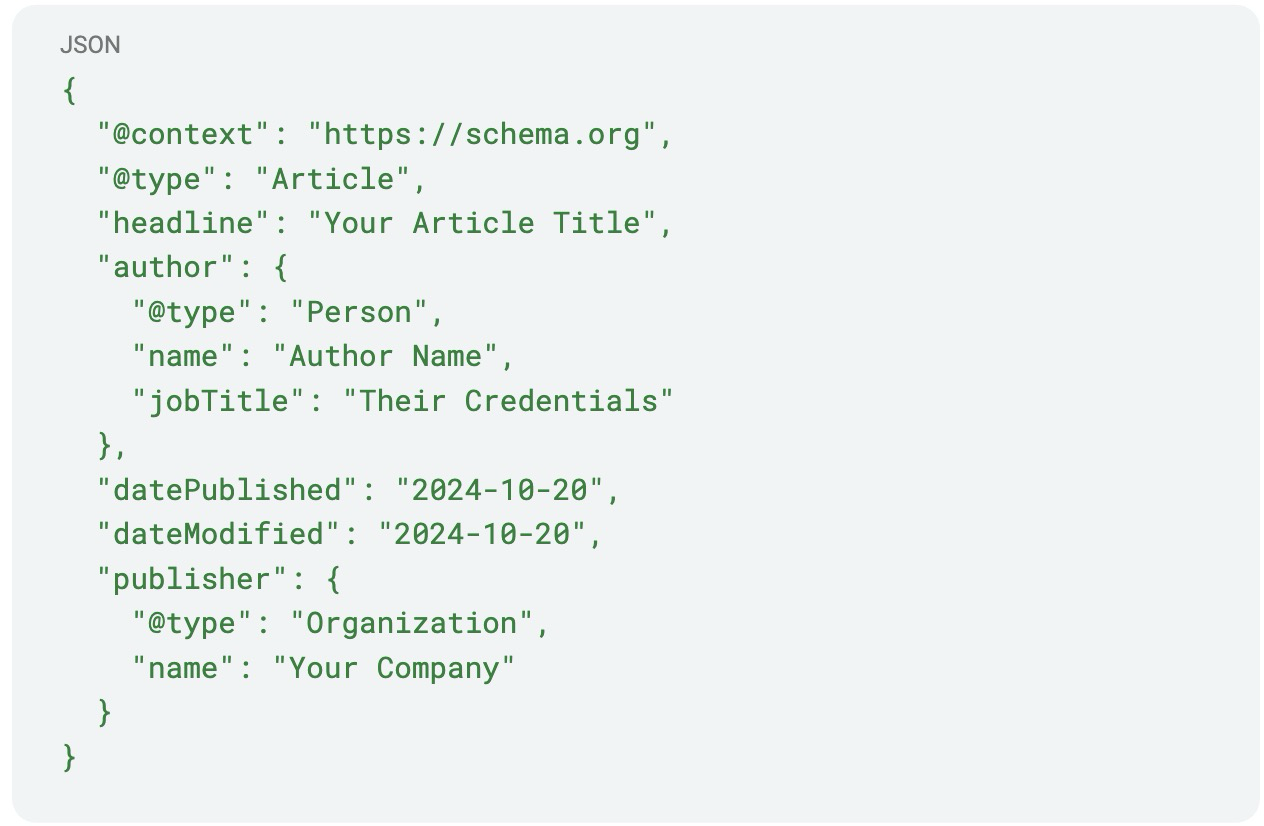
FAQ Schema Powerful for question-based queries:
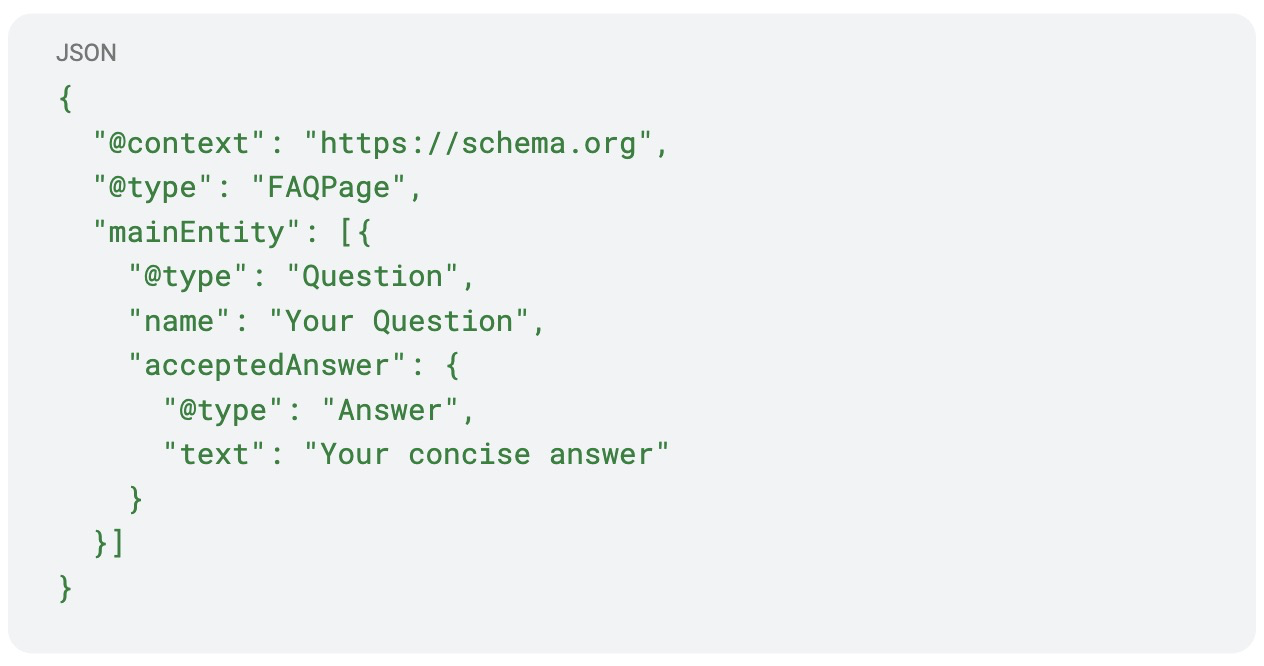
HowTo Schema For process-based content:
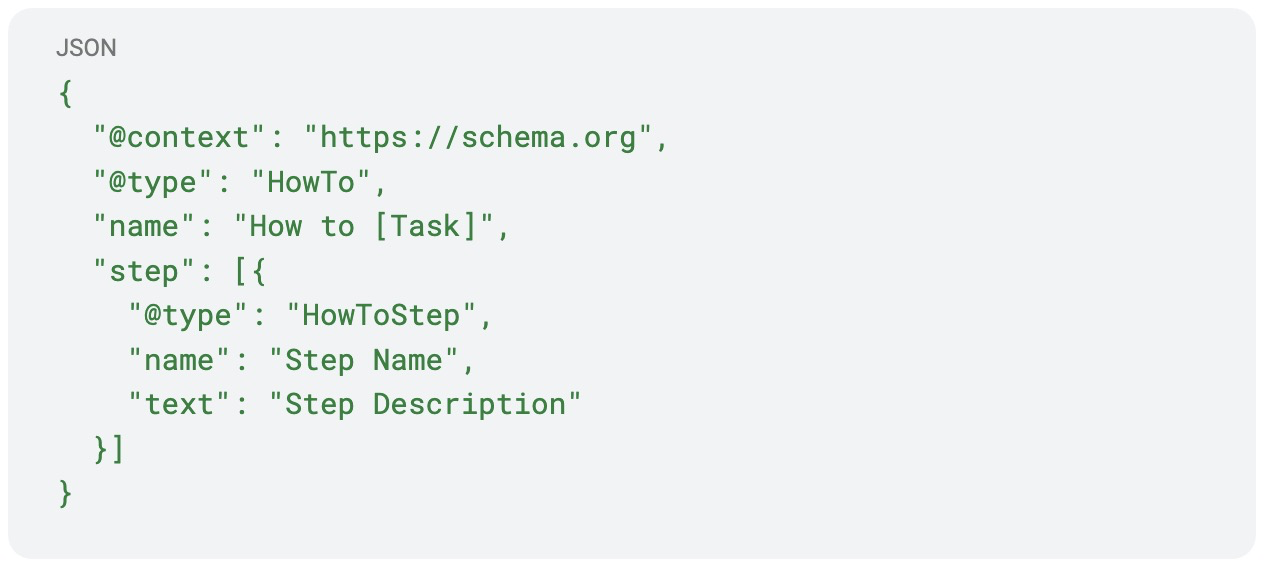
Why this matters: Schema markup doesn't guarantee AI Overview inclusion, but it makes your content machine-readable. Google's AI can parse structured data more easily than unstructured text.
Step 5: Create Statistics and Data Worth Citing
Here's a secret: AI Overviews LOVE citing original data and statistics.
Why? Because Google's AI is trying to provide authoritative answers. Original research and data are inherently more authoritative than opinions.
What to create:
- Original research and surveys
- Data analysis and trend reports
- Industry statistics compilations
- Case studies with measurable results
- Comparative analyses with hard numbers
Pro tip: Even if you can't conduct original research, you can aggregate and analyze existing data in new ways. "What 500 AI Overview Citations Reveal About Google's Selection Criteria" is cite-worthy even if you're analyzing others' data.
Step 6: Optimize for the "People Also Ask" Connection
There's a relationship between "People Also Ask" (PAA) boxes and AI Overviews. Both are question-driven. Both value comprehensive answers.
The strategy:
- Find PAA questions related to your content
- Create dedicated sections answering each question
- Use the actual PAA question as your H2 header
- Provide a concise answer immediately below
Google's AI often pulls from content that already performs well in PAA boxes. It's a leading indicator.
Step 7: Build Your Author Authority
Google increasingly cares about WHO is saying something, not just what's being said.
How to build author authority:
- Create detailed author bio pages
- Include credentials, experience, and expertise
- Link to other authoritative content by the same author
- Get mentioned and cited on other authoritative sites
- Use AuthorRank schema markup
- Build social proof (LinkedIn, industry publications, speaking)
The long game: Establish yourself or your team as recognized experts in your field. When Google's AI needs to cite someone on your topic, you want to be the obvious choice.
Step 8: Update, Refresh, and Republish
Stale content rarely gets featured in AI Overviews for current queries.
The refresh strategy:
- Review your top content quarterly
- Add new sections for recent developments
- Update statistics and examples
- Refresh dates (published AND modified)
- Add or update multimedia elements
- Improve structure based on new PAA questions
Important: Don't just change the date. Make substantial improvements. Google can tell the difference between real updates and date manipulation.
What NOT to Do (The Stuff That Backfires)
Let's talk about the mistakes that tank your chances:
Don't Keyword Stuff
AI Overviews don't work on keyword density. Google's AI understands semantic meaning and context. Writing "AI Overviews AI Overviews AI Overviews" makes you look like a spam bot.
Instead: Write naturally and comprehensively about your topic. Cover related concepts and use varied terminology.
Don't Create Thin Content
500-word blog posts aren't getting featured. AI Overviews need depth to synthesize from.
Minimum: 1,500-2,000 words for most topics. Complex topics might need 3,000+. But length alone doesn't matter - depth does.
Don't Ignore Mobile Experience
AI Overviews appear on mobile searches. If your site is garbage on mobile, you're out.
Check: Page speed, mobile responsiveness, Core Web Vitals, and mobile usability. All of it matters.
Don't Use Misleading Clickbait
Google's AI is evaluating whether your content actually answers the query. If your headline promises one thing and your content delivers something else, you won't get featured.
The rule: Deliver on your headline promise in the first two paragraphs. Then expand.
Don't Neglect Technical SEO
AI Overviews still come from indexed, crawlable pages. If Google can't crawl your site, you can't get featured.
Basics to check:
- XML sitemap
- Robots.txt isn't blocking important content
- Site speed and Core Web Vitals
- HTTPS security
- Proper canonical tags
- No duplicate content issues
What Gets Measured Gets Managed
You can't just write content and hope. You need to track what's working.
Metrics to monitor:
1. AI Overview Appearance Rate
Manually search for your target queries and track:
- Which queries trigger AI Overviews
- Whether you're cited
- Where you appear in the citations
- What specific content gets pulled
Tool tip: Use Google Search Console to see which queries drive impressions but low CTR - often a sign they're appearing in AI Overviews.
2. Branded Citation Mentions
Track how often your brand name appears in AI Overviews, even without direct links. This is pure brand visibility.
3. Citation Link Clicks
In Google Search Console, look for:
- Impressions from AI Overview positions
- Click-through rates from those positions
- Which specific pages get cited
4. Topic Authority Expansion
Track how many related queries in your topic cluster start featuring you. This indicates growing topical authority.
5. Competitive Benchmarking
Monitor:
- Which competitors appear in AI Overviews
- For which queries
- How their content differs from yours
The Future-Proofing Mindset
Here's the reality: AI Overviews are evolving fast. What works today might not work exactly the same way in six months.
But the fundamentals won't change:
- Expertise matters. Be genuinely knowledgeable about your topic.
- Depth matters. Comprehensive coverage beats surface-level content.
- Structure matters. Make your content machine-readable.
- Authority matters. Build real credibility over time.
- Quality matters. No shortcuts replace actually valuable content.
The brands that win in AI Overview optimization aren't gaming the system. They're building genuine expertise that AI systems naturally want to cite.
That's the meta-strategy: Become so authoritative and comprehensive in your niche that any AI system would be foolish not to reference you.
Everything else is just tactics in service of that goal.
Real Talk: Is This Worth Your Time?
Look, I'll level with you.
Optimizing for AI Overviews takes effort. Real effort. You can't just sprinkle some schema on a mediocre blog post and expect results.
But consider the alternative:
Option A: Ignore AI Overviews, watch your traffic decline, complain that "SEO is dead," and slowly become irrelevant.
Option B: Adapt your strategy, build genuine authority, show up where your audience is actually searching, and own the next decade of search visibility.
The choice is obvious.
The brands making this shift now are going to dominate their categories. The ones waiting for "things to go back to normal" are going to become case studies in obsolescence.
AI Overviews aren't going away. They're expanding.
Get featured now, or get left behind.
Your move.
Key Takeaways
What exactly are Google's AI Overviews?
AI Overviews are AI-generated summaries that appear at the top of Google search results, synthesizing information from multiple sources using Google's Gemini model. Unlike featured snippets that pull from one source, AI Overviews create new text by analyzing and combining information from several authoritative sources. They appear before traditional search results and often include citations, images, and follow-up questions.
How is appearing in AI Overviews different from ranking #1 traditionally?
Traditional ranking means your link appears first in search results and users click through to your site. AI Overviews can feature your content without users clicking - your information gets synthesized into Google's answer. However, you gain brand visibility and authority through citations. Think of it as the difference between owning a billboard (traditional ranking) and being quoted by a trusted news source (AI Overview citation). Both have value, but they work differently.
What's the single most important factor for getting featured?
Topical authority combined with content depth. Google's AI favors sources that are recognized experts in a specific niche and provide comprehensive coverage of topics. You can't fake this with tricks - you need to become genuinely authoritative through consistent, high-quality content creation, proper structure, and credibility signals. If Google's AI needs to explain your topic, you want to be THE source it pulls from.
Does schema markup really matter for AI Overviews?
Yes, but not as a ranking factor - as a communication tool. Schema markup (Article, FAQ, HowTo) makes your content machine-readable, which helps Google's AI understand and extract your information more accurately. It's like putting your content in a format that AI can easily parse. Sites with proper schema aren't guaranteed inclusion, but they make Google's job easier - and that matters.
How long does content need to be to get featured?
There's no magic number, but shallow content doesn't cut it. Most featured content is 1,500-2,000+ words because AI Overviews need depth to synthesize from. But length alone isn't the goal - comprehensive coverage is. A 2,000-word article that thoroughly covers a topic beats a 5,000-word article that rambles. Focus on answering every related question someone might have about your topic.
Will AI Overviews kill my organic traffic?
For pure informational queries where users just want quick answers - yes, expect lower CTR. But high-intent commercial and transactional queries still drive clicks. Plus, being cited in AI Overviews provides brand visibility and authority that compounds over time. The smart play isn't fighting AI Overviews - it's dominating both AI Overview citations AND traditional rankings across your entire funnel. You need visibility everywhere your audience searches.
How do I track if I'm appearing in AI Overviews?
Manually search your target queries and document when AI Overviews appear and whether you're cited. Use Google Search Console to identify queries with high impressions but low CTR (often indicates AI Overview presence). Track branded mentions even without direct links. Monitor which specific pages get cited and for which queries. Set up competitor monitoring to see who's winning in your space. This is manual work right now - no perfect tracking tool exists yet.
What's the fastest way to start getting featured?
Take your best-performing content and make it 10x better. Add comprehensive depth, implement proper schema markup, create FAQ sections targeting "People Also Ask" questions, add original data or statistics, improve structure with clear question-based headers, and refresh it with current information. Then build supporting content around the same topic cluster to establish topical authority. Quick wins come from optimizing what's already working, not starting from scratch.

